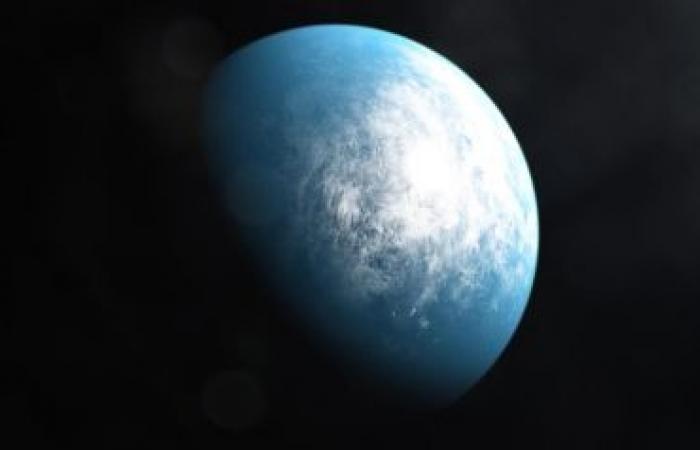23 October 2020
The invention of Australian scientists paves the way for a “renaissance in exoplanet observation”.
Australian scientists have developed a new type of sensor to measure and correct the distortion of starlight caused by viewing the Earth’s atmosphere. This should make it easier to examine the possibility of life on distant planets.
With the help of artificial intelligence and machine learning, optical scientists at the University of Sydney have developed a sensor that can neutralize the “twinkle” of a star caused by thermal fluctuations in the Earth’s atmosphere. This will facilitate the discovery and study of planets in distant solar systems with optical telescopes on Earth.
“The main method of identifying planets orbiting distant stars is to measure regular breaks in starlight caused by planets blocking parts of their sun,” said lead author Dr. Barnaby Norris.
“It’s very difficult from the ground, so we had to develop a new way of looking at the stars. We also wanted to find a way to observe these planets directly from Earth, ”he said.
The team’s invention is now being used in one of the largest optical telescopes in the world, the 8.2-meter Subaru telescope in Hawaii operated by the National Astronomical Observatory of Japan.
“It is really difficult to separate the ‘sparkle’ of a star from the light ingress that planets cause when observed from Earth,” said Dr. Norris. “Most observations of exoplanets come from orbiting telescopes like NASA’s Kepler. With our invention we hope to initiate a renaissance of exoplanet observation from the ground. ”
Novel methods
With the help of the new “photonic wavefront sensor”, astronomers can image exoplanets directly around distant stars from Earth.
Thousands of planets beyond our solar system have been discovered in the past two decades, but only a small handful have been imaged directly from Earth. This severely limits scientific research into these exoplanets.
Creating an image of the planet provides far more information than indirect detection methods such as measuring starlight incursions. Earth-like planets could appear billions of times weaker than their host star. Observing the planet apart from its star is like looking at a 10 cent coin in Sydney as seen from Melbourne.
To solve this problem, the Faculty of Physics’ scientific team developed a “photonic wavefront sensor” that can measure the exact distortion caused by the atmosphere in new ways and correct it thousands of times by the telescope’s adaptive optics systems one second.
“This new sensor combines advanced photonic devices with deep learning and neural network techniques to create an unprecedented type of wavefront sensor for large telescopes,” said Dr. Norris.
“In contrast to conventional wavefront sensors, it can be placed in the same place in the optical instrument where the image is generated. This means that it is sensitive to distortion that is invisible to other wavefront sensors currently used in large observatories, ”he said.
Professor Olivier Guyon of the Subaru Telescope and the University of Arizona is one of the world’s leading experts in adaptive optics. He said: “This is undoubtedly a very innovative approach that is very different from any existing method. It could potentially address several major limitations in current technology.
“We are currently working with the University of Sydney team to test this concept on Subaru in collaboration with SCExAO, one of the most advanced adaptive optics systems in the world.”
Application beyond astronomy
Scientists achieved this remarkable result by building on a novel method to measure (and correct) the wavefront of light that passes through atmospheric turbulence directly in the focal plane of an imaging instrument. This is done using an advanced light converter known as a photonic lantern, which is linked to a neural network inference process.
“This is a radically different approach to existing methods and solves some major limitations in current approaches,” said co-author Jin (Fiona) Wei, a PhD student at the Sydney Astrophotonic Instrumentation Laboratory.
The director of the Sydney Astrophotonic Instrumentation Laboratory at the School of Physics at the University of Sydney, Associate Professor Sergio Leon-Saval, said, “While we came to this problem to solve a problem in astronomy, the technique proposed is extremely relevant for a wide range of fields.
“It could be used in optical communications, remote sensing, in vivo imaging, and any other area where accurate wavefronts are received or sent through a turbulent or cloudy medium such as water, blood, or air.”
More information…
These were the details of the news – AI and photonics to decipher the “twinkling” of the stars... for this day. We hope that we have succeeded by giving you the full details and information. To follow all our news, you can subscribe to the alerts system or to one of our different systems to provide you with all that is new.
It is also worth noting that the original news has been published and is available at de24.news and the editorial team at AlKhaleej Today has confirmed it and it has been modified, and it may have been completely transferred or quoted from it and you can read and follow this news from its main source.

